Episode 198
What you’ll learn in this episode:
- How art history and jewelry history interact
- How Jan’s experience as a historian helped her write her first book, and what she learned from self-publishing
- Why sweetheart jewelry became popular during World War II, and why few people today know what it is
- How Jan draws on her theater background to connect with and educate museum goers
- How museum education and jewelry history developed into their own fields
About Jan Krulick-Belin
Jan Krulick-Belin, a museum and art consultant and art and jewelry historian, has more than forty years of experience at such institutions as the Corcoran Gallery of Art, Denver Art Museum, Beaumont (Texas) Art Museum, and Smithsonian Institution. Retired as director of education at the Phoenix Art Museum, she still works with museums, art organizations, and private collectors and served as guest curator at the Sylvia Plotkin Judaica Museum, Phoenix.
Additional Resources
- Facebook: www.facebook.com/JanKrulick
- Website: www.jankrulick.com
- Amazon: www.amazon.com/author/jankrulickbelin
- Twitter: @JanKrulickBooks
Photos:
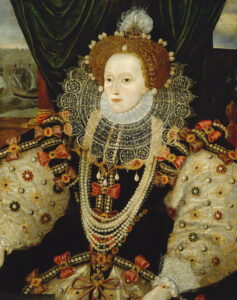
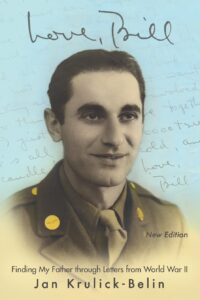
Cover of Jan’s book “Love, Bill”
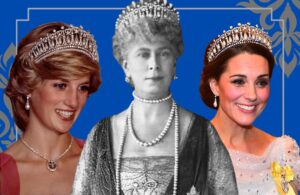
Royal Jewels archive
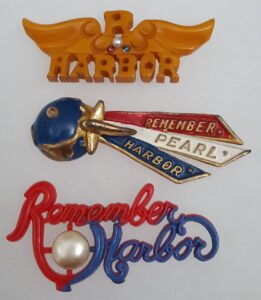
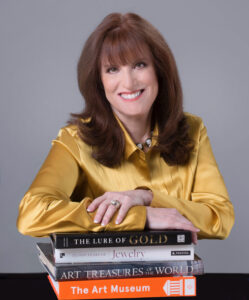
Transcript
As an art and jewelry historian and museum educator, Jan Krulick-Belin was uniquely qualified to follow the surprising journey she went on to write her first book, “Love, Bill: Finding my Father Through Letters from World War II.” Bringing together her knowledge of World War II-era culture and her research skills, writing the book was a labor of love. She joined the Jewelry Journey Podcast to talk about her tips for self-publishing; what sweetheart jewelry is and why it became so popular during World War II; and what it was like to be at the forefront of the museum education field. Read the episode transcript here.
Sharon: Hello, everyone. Welcome to the Jewelry Journey Podcast. This is the first part of a two-part episode. Please make sure you subscribe so you can hear part two as soon as it’s released later this week.
One of the eternal questions is whether one has to be a jewelry historian to appreciate the background of jewelry. Do you have to be a jeweler to appreciate jewelry? My guest, Jan Krulick-Belin, can answer all our questions. She is an independent museum educator and a jewelry historian. She is also the author of a book called “Love, Bill: Finding my Father Through Letters from World War II.” She most likely would not have been able to diligently research or write the book without being a historian. Being a historian was important to her becoming a museum educator, jewelry historian and an author. She’ll weave the pieces for us together in today’s jewelry journey. Jan, welcome to the podcast.
Jan: Thanks, Sharon. It’s great to be with you again.
Sharon: I’m glad you could make it this time. I know you’ve been traveling all over the world. Every year, you go somewhere exotic and wonderful.
Jan: We try.
Sharon: I know you came back from the Netherlands for the Vermeer exhibit.
Jan: The Johannes Vermeer exhibition, which was a once-in-a-lifetime exhibit that was amazing to have been able to bring together. I think it was 28 of the 36 or 37 known or attributed works by Johannes Vermeer. There will never be anything like it again, so I was happy to go. I’m also very fascinated by Dutch painting and have actually lectured on jewelry in Dutch paintings.
Sharon: Were you able to learn anything this time around?
Jan: I had the opportunity, as I said, to see a lot of his paintings together in one place, side by side, and I had the luxury to really look at them longer than most other opportunities. I think the way they did the exhibition, they encouraged looking. There was no audio guide. You weren’t allowed to go through on a tour. There was very little labeling. It was all about looking carefully. To me, looking is part of learning.
Sharon: As a jewelry historian and an art historian, which one was more important in this exhibit?
Jan: Probably the art historian part of it comes first because I think the focus of the exhibition was to understand this artist’s work, what made it different than other work at the same time period during the Dutch Golden Age. What was his focus? His interest in light? His interest in painting about love and relationships and religion or nonreligion? His interest in optics? All of those things came into play in understanding his work. I think the art history brain was working a little harder than the jewelry history brain.
Sharon: Do you think of art history as your vocation or your avocation, and jewelry history as an avocation?
Jan: That’s a good one. I’m trained academically as an art historian and a museum educator. That is what I spent most of my professional career doing. Jewelry history, as a field, came a little bit later, almost towards the end of my formal work in the museum setting. It was something I’ve always been interested in and attracted to. My mother loved jewelry. As a little girl, I can always remember diving into her jewelry drawers when she wasn’t paying attention. The attraction to jewelry has always been there.
In the last few years, working my last job as education direction at the Phoenix Art Museum, the museum did fundraisers every year which involved an art and antique show. That’s where I met some important people in the jewelry business who had booths there. In conversation with them, they told me about a program that was run every summer back east called Jewelry Camp. I think Sharon could smile because that’s where we first met. I decided that when I stopped working full-time, I would take the opportunity and attend. That was the beginning of diving into this offshoot of art history.
It’s all related. Art history involves not only paintings and sculptures, but the decorative arts. Jewelry is one of those decorative art forms, and I think they go hand-in-hand. It was an avocation at first, but now I’m lecturing in both, so I guess it’s now become a vocation. It’s gone around full circle.
Sharon: Do you think that once you write a book on jewelry and jewelry history, it will become more of a vocation?
Jan: Oh gosh, that’s a good question. The book you mentioned, my first and only book, had absolutely nothing to do with either one of these two things. People kept saying, “What’s your next book?” and I thought, “Oh, God.” It was such a process getting one book out that I thought, “That’s it,” but I have been playing around with an idea. I’ve been doing research towards it. I’m not sure yet if I’ll ever bring it to fruition, but it does relate to art history and jewelry history, so it’s more in my wheelhouse. It’s more of an art historical, jewelry historical fiction. We’ll see how it turns out. It is based on an actual diamond that existed and disappeared shortly before World War II, when it was stolen in Paris. I’m playing with the idea. Maybe finally I can bring in all the things I’ve done professionally and for fun into my writing.
Sharon: That’s a fascinating book. I can’t wait to read it. It sounds like an interesting subject. You talked about the fact that you couldn’t have written the first book you wrote, “Love Bill.” You went through all your father’s—who you never met, who died when you were six.
Jan: Six, yes.
Sharon: How did being a historian play into that?
Jan: Number one, for the audience members who aren’t familiar with the book, being a historian and understanding basic research skills and diving into primary source documents and that type of thing was necessary. It never started out as a book. I joke about it when I speak to groups; I’m kind of an accidental author.
My dad did die when I was only six years old. A year or so before my mother passed, she mentioned that she had saved all the love letters he had written her from World War II and that she had been saving them for me. That was an interesting occurrence in and of itself because my mom hardly ever talked about my father growing up. I don’t know if it was grief or if she didn’t want to get into it. As I wandered down this lengthy path of family and family secrets, there were things she did not want me to find out about. Obviously, had I read all the letters in her presence before she passed, the questions and answers that she didn’t want to talk about probably would have had to come out. She gave me the letters when we were moving her into assisted living, and she made me promise I wouldn’t read them until after she was gone. It took about another five years for me to gather up the courage and the emotional want to sift through the letters.
It really started out as a journey of understanding who my father was. The more I got into it, my interest in visiting all the places he was stationed during the war grew, as well as my interest in trying to track down a very close friend he made while he was stationed in Morocco in North Africa at the very beginning of the Americans’ involvement in the war. I had all these crazy ideas of, “Oh, I’m going to find this man and his family,” blah, blah, blah. As I was going on this actual journey and doing the research to try to find this person and to learn more about my father’s time in the army and all of that—research, as I said—I was telling people the story. As the events were getting more and more interesting and crazy and incidental and miraculous, everybody was telling me what a great book it would be.
It’s all fun when people tell you, “Oh, you should write a book. It’s the easiest thing in the world to sit down and do.” In my professional career, I’ve done lots of writing, but not a book. I started warming to the idea. I have two nieces who are very special to me. They obviously never met their grandfather, and I decided it would be something I would do and give them a little bit of their legacy, as well as finally understanding my own legacy more. So, it did turn into a book and learning about that world and how you go about self-publishing and marketing and all of that. That was a whole new world for me. I always say now I divide my life into my author, World War II journey, and the other is my art and jewelry history world.
Sharon: You talked about something that I would have done if I had been writing this book, and that is putting it down and saying, “I can’t do it. Forget it.”
Jan: I can be a wonderful procrastinator. I think there is that element in all of us. In this time period, the journey began when I stopped working full time in the museum world. I was picking up projects and doing consulting. When somebody asked me to do a project, it was much easier to say yes to that because that was familiar, and then I could push the book aside. But after a number of years of constantly pushing it aside, every time I went back to it, I noticed that I’d lose my train of thought and my voice would change, and the author’s voice is so important in writing a book. So, I finally said, “O.K., that’s it. I’m not going to take any new projects. I’m going to do it,” and that’s what I did.
It’s like anything else. It’s a discipline. I literally sat down at my desk in the morning, just like I was going to work, from 8:30 or 9 in the morning until 5. I said, “O.K., if I get a page today, great. If I get 10 or 15 pages, even better.” That’s what people were telling me in the author world. A lot of writers I was meeting at author groups I got involved with here in the Phoenix area, they said you just push, and it’s not easy.
I do remember I had a wonderful professor in graduate school who actually was the founder of the museum education program at George Washington University, which I attended. One time I said to her, “This is hard,” when she gave a writing assignment. She goes, “Why did you ever think writing was easy?” It was like, “Boom!” It was a revelation to me. I just assumed that people who sat down and wrote books and articles and doctoral theses and all of that, they could just whip it out. It’s not like that. I was able to take a deep breath and go, “O.K., that’s what editors are for, so just do the best you can.” That’s what I did. I just pushed through.
Sharon: I remember when we first met, we were having breakfast and you told us about the idea for the book. I thought, “Oh, yeah, when I see it, I’ll believe it,” and you’ve written the book.
Jan: Yeah, it took a few years from the time we first met, but as I said, I just decided to do it at one point. You realize when you’re up in the middle of the night and you can’t shut off your brain and you have all these ideas going. It wouldn’t let me go.
In a way, I feel like my dad was sitting on my shoulder. The one thing I learned about him in working on the project was that he always wanted to be a writer himself. His dream was to own a bookstore. There’s this little part of me who felt like he was a part of the process. He was there guiding me. So many strange and wonderful things happened during that whole journey. I felt like he was there opening doors for me, things that were coincidental or almost miraculous, the things that would happen. I followed that path and those signposts until I finally had this finished project. It was exciting. Of all the things I’ve accomplished in my whole career at all levels, I think I’m proudest that I’ve published a book and it’s done well in terms of critical review.
Sharon: I give you a lot of credit.
Jan: Thank you.
Sharon: Do you think that’s related to your interest in sweetheart jewelry? First, explain what that is, then, does that have a connection?
Jan: The idea of sweetheart jewelry really started during World War I, but by World War II, it became a full-blown thing. During World War II, a lot of precious materials and metals and things like that were rationed for the war effort, things like pearls and crystals and rhinestones and diamonds. All of these things were unavailable due to the war and shortages, and there were enemy countries we couldn’t trade with anymore for some of those raw materials.
So, there was a new type of jewelry. Women’s clothing was rationed. Women were wearing very simple, very straight, very—shall we say—boring clothing during the war, and they felt that they needed to glam it up and jazz it up a bit. The type of jewelry that became very popular was whimsical and made with fun materials like plastics, Bakelite, wood, metals, fabrics, textiles. They were also buying and making and designing things with patriotic imagery. It was part of boosting morale in this country during the war. It was a way to lift your own spirits and look a little more glamorous or more fun in your dress. A lot of these things, because they were fairly inexpensive, were sold to raise money for the war effort. On the flip side, you could buy things here in the States, but GIs overseas were also able to pick up things that would say, “My sweetheart,” or “Mom,” those kinds for things, for the women in their lives back home.
It’s a really interesting type of jewelry. This time period was short-lived in a way, but it said a lot about who we were in America during the war and how we felt and what we thought about those servicemen overseas. Some of them are really fun. Maybe a GI would buy a pin for his girlfriend, and it was a picture of a soldier with a heart that would say, “I’m taken,” just to remind men who were left behind in the States that she’s got somebody overseas. There are some wonderful themes. You’ll see a lot of “V for Victory” pins.
So, it was something I started learning about. My very first piece of sweetheart jewelry I found was actually by accident. I didn’t know what it was. It turned out it was what I now know is called a MacArthur Heart. It was a pin that actually wound up on the cover of Life Magazine. It was a large heart with a keyhole, and it was suspended from a skeleton key. It was red Bakelite, and as I said, it wound up on a model on the cover of Life Magazine in the early 40s. They said, “General MacArthur holds the key to our future and the key to our hearts and minds.”
I found it at a flea market; I didn’t know what it was. Someone at Jewelry Camp said, “Hey, that thing is really important. Do you know what it is?” I said, “A heart? I don’t know.” That’s what happened. So, I started looking it up, and I was fascinated by this whole area of jewelry. I have really started collecting it. Once I got involved in working on my dad’s story and on the book, I was even more into all things World War II. It was like two parts of my world and my life coming together in one thing, which was an interesting occurrence. I still collect it. Each of the different branches of the armed services had their own, even including the women’s armed services divisions. They each had their own type of sweetheart jewelry, and I’ve collected a lot. Dad was in the Army Air Corps, so I do focus a lot on Army Air Corps-related sweetheart jewelry, but other stuff as well if it is interesting or fun or something I don’t have already.
Sharon: Do you find that, since most people don’t know what it is, you find it at flea markets or antique stores?
Jan: All of the above. Once eBay came along, you can find a lot of things on eBay that required you to hunt in flea markets and antique malls and antique stores. A lot of people don’t know what they are, so quite often if I scan a case and see one, I will educate the person who has the booth because they don’t know what it is. You can find it anywhere else you’d go look for antique jewelry.
Sweetheart jewelry was also made by some of the high-end houses. Cartier is known for making a handful of very famous sweetheart jewels that they designed and sold around the war. Again, fine materials were difficult to come by, but when France was occupied by Germany, Cartier did a very subversive brooch called the Caged Bird Brooch. It is a little bird in a cage, and the colors of the stones on the bird were red, white and blue, the colors of the French flag. When France was liberated, they developed what they called the Freed Bird Brooch, which is the cage door swung open and the bird looks like it’s about to come out. Tiffany made some wonderful pieces as well. Gips did a great bracelet. They also made cuffs that had gold and silver stars on them.
We know during the war and still to this day, we talk about a gold star family. During the war, you would fly a banner in your window. You would have a blue star on the banner for each service person in your family overseas or serving in the armed services. A silver star would mean somebody was wounded in action, and a gold star meant you lost somebody who was killed in action. So, Tiffany made a cuff bracelet with gold stars on it. It wasn’t only the cheaper variety and costume jewelry, but that was more prevalent and much more pervasive during this time period.
Sharon: Did people know what they were buying?
Jan: Oh, yes. It was definitely a conscious decision. As I said, it was a way to support the war effort. It was a way to show the pride you had if you had a loved one in the service overseas. As I said, the GIs were able to buy this stuff. There was a lot of stuff being sold at canteens on the bases, particularly in the Pacific theater. There was a lot of mother-of-pearl jewelry that would say “Mother” on it or “Sweetheart.” There was wooden stuff or even trench art. Soldiers were making jewelry from artillery shells or whatever things they could get their hands on and sending them back home just send their love and say, “I’m here. I’m O.K. We’re doing our part.” It was very common knowledge then; not so much now.
Sharon: Now, people don’t know what it is.
Jan: I have a lecture on it because it is something that people are very interested in once you start telling them about it. I’ve had people come up to me and show me stuff they’ve had, that their mothers or grandmothers or aunts had and left, and they didn’t know what it was. I said, “Well, that’s a piece of sweetheart jewelry.” They had no idea what it was.
Sharon: That’s interesting. We will have photos posted on the website. Please head to TheJewelryJourney.com to check them out.

